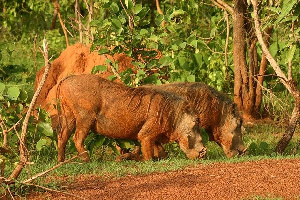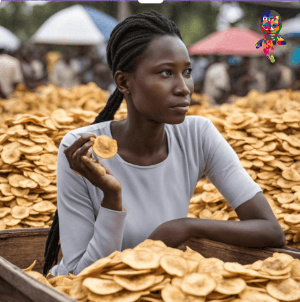- Home - News
- Polls
- Year In Review
- News Archive
- Crime & Punishment
- Politics
- Regional
- Editorial
- Health
- Ghanaians Abroad
- Tabloid
- Africa
- Religion
- Election 2020
- Coronavirus
- Photo Archives
- News Headlines
- Press Release
General News of Friday, 23 April 2021
Source: classfmonline.com
Stop all surface mining permits – CSOs accuse govt of granting mining permit near Mole Park
Some civil society organisations have accused the government of Ghana of having granted mining permits to some companies to operate near the Mole National Park in the Savanna Region.
The Centre for Environmental Impact Analysis, Centre for Public Interest Law and the Wassa Association of Communities Affected by Mining say the development is disturbing, and urged the government to stop the companies from prospecting near the natural reserve.
The Associate Executive Director of the Wassa Association of Communities Affected by Mining, Hannah Owusu-Koranteng said in commemoration of World Earth Day that the “government has also granted mining exploration rights to a mining company to explore gold near the Mole National Park”.
“The President has among other things stated that mining becomes a danger to society when the land is degraded after the minerals are extracted with toxic materials.”
“We, therefore, call on the government to halt attempts to mine forest reserves”, the groups appealed.
They added that the “government should also place a moratorium on the granting of mining lease permits for all surface mining in Ghana.”
The Minister of Lands and Natural Resources recently issued a directive banning the granting of mining licences in forest and natural reserves.
In a statement, the ministry said it “hereby, directs persons and/or companies engaged in reconnaissance and/or prospecting in forest reserves, with or without legal authorisation, to suspend such activities until further notice”.
The ministry said it has “further directed the Minerals Commission, with immediate effect, not to accept, process and/or recommend the grant, including the renewal and/or extension, of reconnaissance and prospecting licences in forest reserves.”
About the Mole National Park
Mole is Ghana’s first, largest and most prestigious protected area. The Park is managed mainly for its outstanding natural, physical, historical and cultural values. It covers an area of 4,577 km2 of fairly undisturbed Guinea savannah in the northern part of Ghana.
Mole is rich in biodiversity and home to some 742 vascular plant species, over 90 mammal species including 5 primate species, of which species of conservation and tourist interest include Elephant, Buffalo, Kob, Western Hartebeest, Roan Antelope, Defassa Waterbuck, Oribi, Bohor Reedbuck and Red-flanked Duiker. Rare and endangered species include the Yellow-backed Duiker, Black and White Colobus Monkey, Leopard and Lion.
The Park is also home to 334 bird species, 33 reptiles, 9 amphibian species, and some 120 butterfly species.
The Park has the most viable elephant population in Ghana, and as such, is a hotspot for elephant conservation. It is also said that the Park has a unique breed of elephant, which are not hostile, not aggressive or insecure, compared to other elephant populations in the rest of Africa.
Mole is one of the seven National Parks in Ghana. The other wildlife estates include six Resource Reserves, two wildlife sanctuaries, one Strict Nature Reserve and five Ramsar sites, managed by the Wildlife Division of the Forestry Commission of Ghana.
The Park’s mission is to sustainably manage the wildlife resources of Mole National Park, increase revenue, and generate economic activities around the Park with a view to contribute towards local socio-economic development.
Effective law enforcement and protection of the Park is ensured through the establishment of the range system, and collaboration with fringe communities. Today, Mole National Park is inscribed on UNESCO’s Tentative List of World Heritage Properties in 2000 and is working and striving to achieve World Heritage Site status soon.
The Park is accessible by road. It also has an airstrip, which is out of use.
Mole shares its borders with 33 fringe communities in two of Ghana’s regions: the Northern Region and the Upper West Region. In addition to savouring the precious flora and fauna through game-viewing, bird-watching, informative walks and camping, visitors to the Park can also visit some of the neighbouring communities, and experience their rich cultural heritage, architecture and traditional livelihood activities, among others.
Nearby tourist attractions include Bui National Park, Gbele Resource Reserve, Wechiau Community Hippo Sanctuary, Paga Crocodile Pond, Paga Pio’s Palace, Wa Naa’s Palace, Pikworo Slave Camp, Sirigu (for its architecture and exterior décor), Ancient Mosques (particularly Larabanga, Bole and Nakose), the Kraal buildings, Nalerigu Defense Wall, Gwollu Defence Wall, Navrongo Cathedral, and the Cathedral of Our Lady of the Seven Sorrows, also at Navrongo.
There is also the Tamale Centre for National Culture, Larabanga Mystery Stone, Wuling Mushroom Rock, and Daboya Smock Village.











